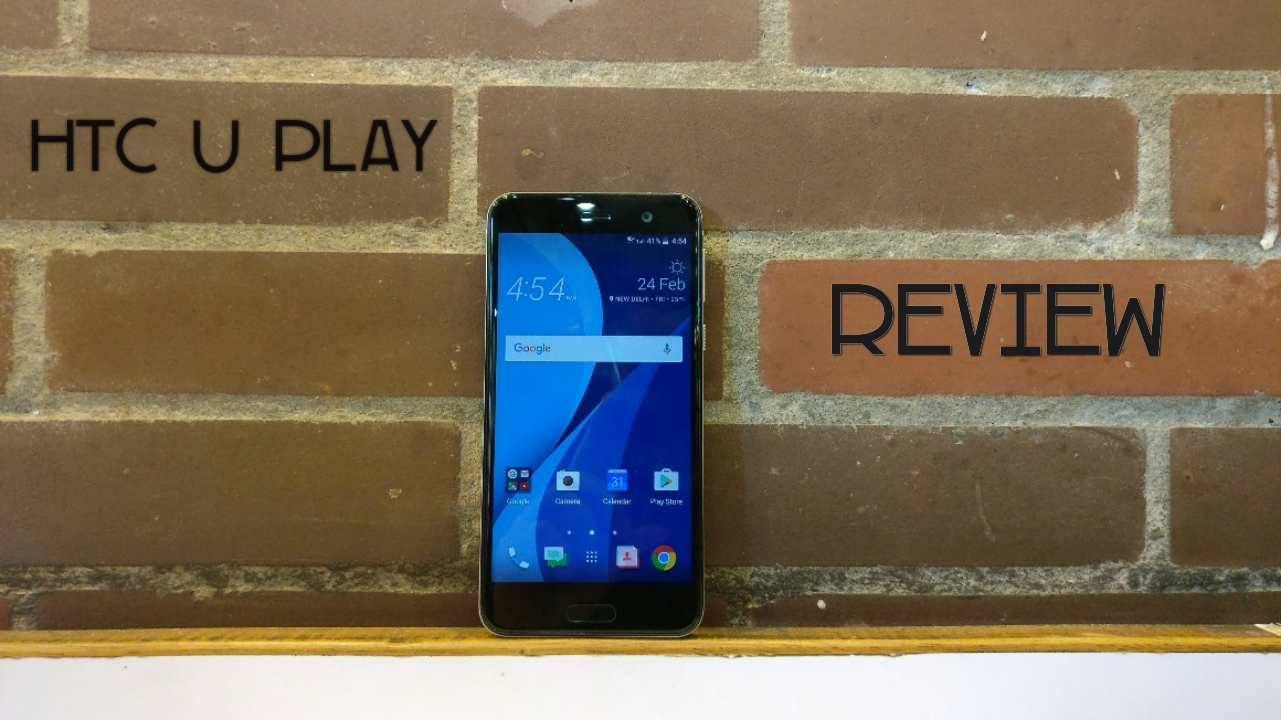HTC has always prided itself on its distinct offerings, features and unique audience appeal. So much so, the Taiwanese brand has always made it a point to distinguish itself from the many Chinese upstarts in India. Now, after a less than stellar 2016, the firm has set off to recover lost ground with the launch of its first two offerings in 2017- The HTC U Ultra and the HTC U Play. While the U Ultra is already out in the market for a price of Rs 59,990, the U Play will hit the stores sometime in mid-march. HTC U Play is more of younger brother to the U Ultra coming in with a price tag of Rs 39,990. Note that this price is MOP (Market Operating Price) and can vary from seller to seller. Nevertheless, HTC has debuted its own version of glass metal blend into the design, with the U Ultra and U Play infusing the colours deeply into this glass. this definitely gives a distinct, premium look and feel to the phone that will charm fans of the brand. But how does the U Play stack up on performance? Let’s find out.
Design
The design has been an area where HTC has usually taken bigger risks, and the new U series from HTC claims to be designed for ‘U’ i.e. the consumers. The U Play being the younger and cheaper of the two comes with a metal frame on the sides sandwiched between glass panel both at the front and back. As claimed by the company, the back of the device comes with a liquid surface finish offering a premium experience as soon as you take the device in your hand. The U Play comes in Iceberg White, Indigo Blue, Black Oil and Cosmic Pink Gold colours for the Indian market. We had the Iceberg White variant and to be honest, the colour never grew on me although it is extremely shiny and reflective. Perhaps a more receptive audience with the ladies? The back of the device curves slightly to give a comfortable feel in hand. Strangely, the HTC logo is almost lost in the white infusion into the glass at the back. Also, the entire back is a fingerprint magnet, which could be bad news if you want your phone to look pristine all the time.
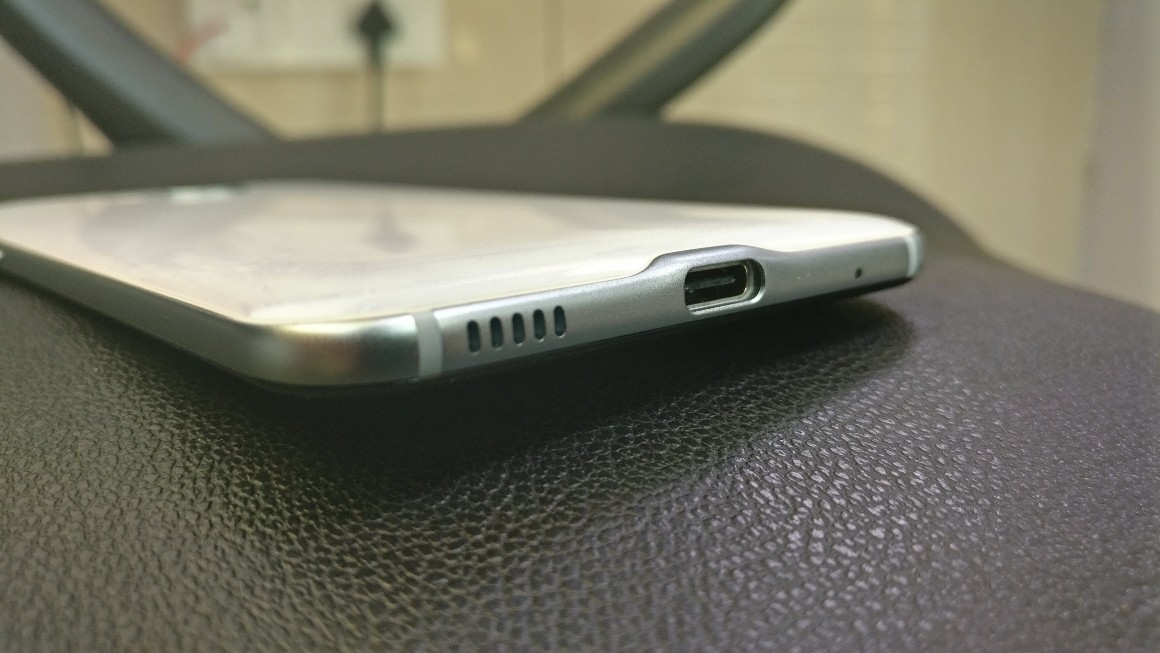
Nevertheless, for a quick physical overview, at the right, we get the volume rocker and the power button which is texturized. There is nothing on the left and up top, we have the SIM tray along with the secondary microphone. At the bottom, we have the USB 2.0 Type-C port along with the speaker grill. The fingerprint scanner is situated at the front, just below the display and the selfie camera, earpiece along with some Sensors is located at the top of the display. At the back, we get the primary camera module which is circular this time along with the LED flash. Regarding the thickness, the U Play is extremely thin at just 7.9 mm and is also not that heavy weighing in at 145 grams. To summarise, the HTC U Play is definitely one of the most comfortable devices in hands and I really liked the glass liquid surface finish at the back but I would recommend you to choose your colours wisely.
Display
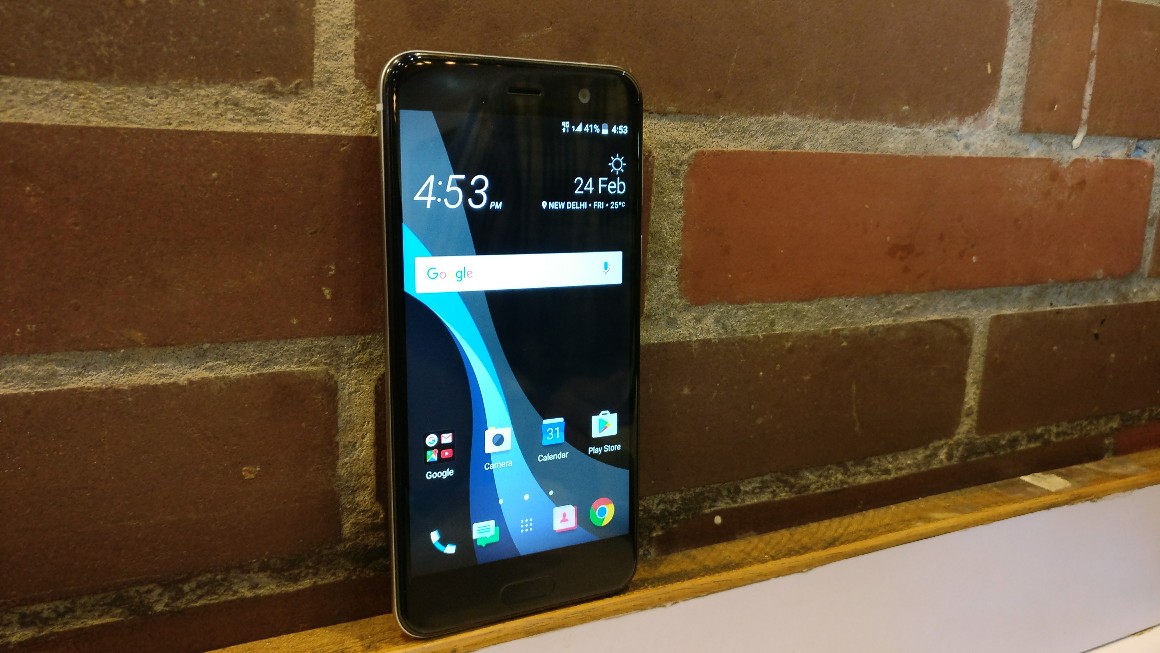
Coming on to the display, the U Play sports a 5.2-inch Full HD (1920 x 1080 pixel resolution) display which is also 2.5D curved on the sides. Overall, the display quality is on par with other devices in this price range. The quality of the display is decent as well and the visibility under direct sunlight was just fine if not great. The auto-brightness was something I kept switched off for most of the time as the device tended to adjust the brightness a little too aggressively for my liking. In terms of durability, the display on the HTC U Play should hold up pretty well. I got no major scratches on the display, thanks to the Corning Gorilla Glass protection up top.
Performance
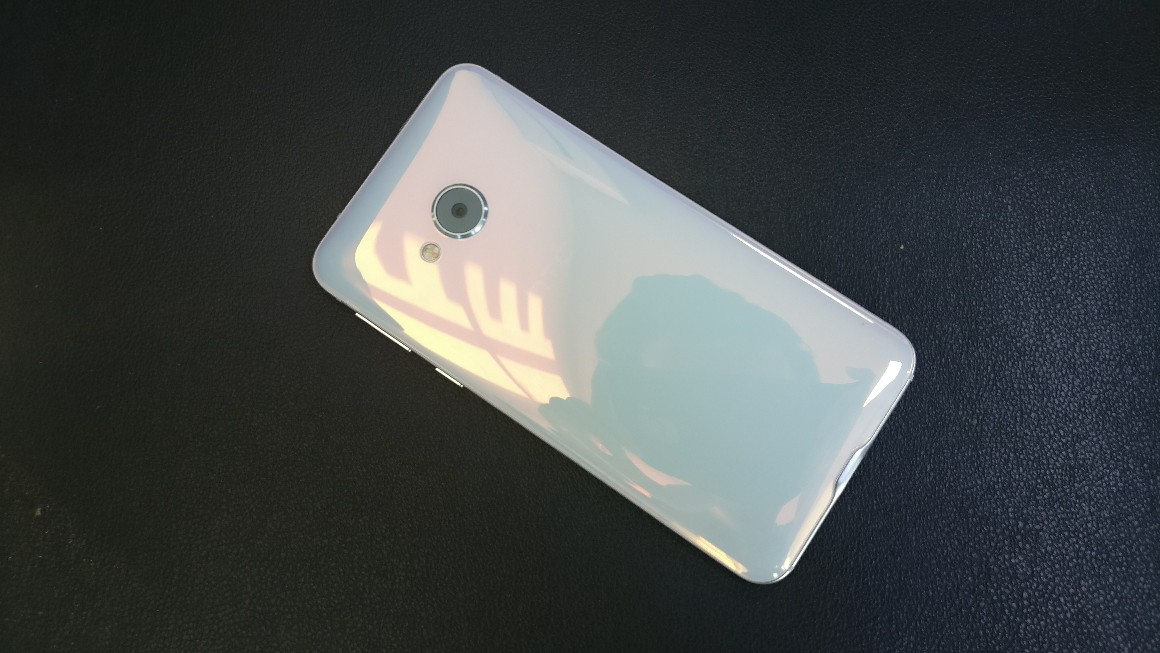
At a price of Rs 40,000, the phone runs into some tough questions. If you look at the internal specifications of the U Play, you will not be too impressed, mainly due to a dated MediaTek Chipset inside. Thus, the U Play is powered by a 64-bit Octa-Core MediaTek Helio P10 chipset coupled with Mali-T860MP2 GPU. We get 4GB of RAM and 64GB of internal storage which is further expandable up to 2TB via microSD which sits in a hybrid Dual SIM card. Out of this 64GB internal storage, we get about 51.92GB as user accessible. Putting all this to real life, HTC U Play performs decently. Even though it packs in a not so desirable processor for this price, the U Play will get you through your daily tasks just fine with no major issues. I hardly noticed any lags or hiccups throughout my testing which is probably because of HTC Sense’s great RAM management. Even multitasking was a breeze on this device, however, I did notice a slight delay in App load times but that is majorly due to the Helio P10 chipset. A possible downside seems to be a propensity to heat up. While hardly a problem unique to the U Play, one does wish and expect a phone at this price to find a way to tackle this issue better.
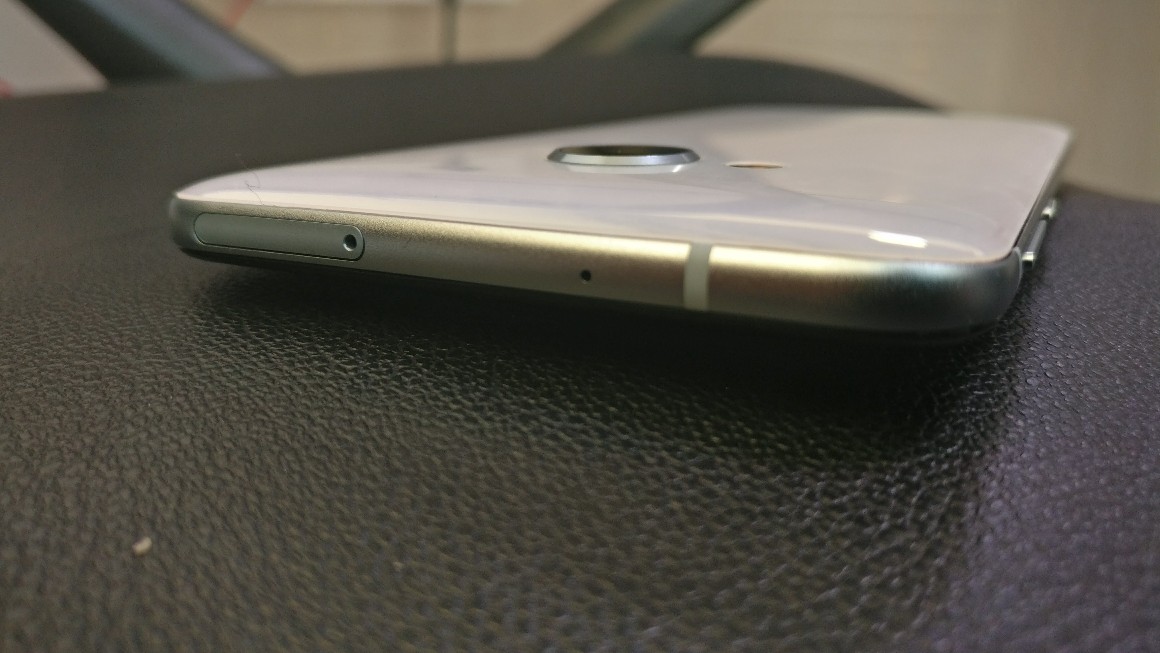
Coming to the gaming performance, the U Play handles most of the games including Asphalt 8, Nova 3, Dead Trigger 2 etc. pretty comfortably but I always gave up after about 15-20 minutes of gaming as became too warm for my liking. Or perhaps it’s just me, fed on all those visuals of exploding batteries that started with a hot phone! On the other hand, running up a high score on relatively light games such as Alto’s Adventure, Subway Surfers, Score Hero was no problem, even with extended sessions.
Software (User Interface) and Audio
If the hardware is not something to boast about, software is certainly where HTC smartphones these days has an upper hand. The U Play runs on Android 6.0 Marshmallow with HTC’s Sense UI on top. While I would any day choose the Stock Android experience over any skin, HTC Sense does impress. The UI is extremely light and runs buttery smooth no matter how fast and where you navigate. Removing all the duplicate apps and sticking to the ones from Google (in most cases) is a really intelligent move. As a result, we get a bit more space from the internal storage to load in our apps, images, music etc. Further, Sense UI also comes with its own Theme Engine which offers a bunch of customizations in terms of the overall look of the UI. We still get Blinkfeed to bring in all your news feed from various social networks and other portals all at one place. Apart from this, we get some nifty little motion gestures such as Double Tap to Wake, Swipe to Unlock, Swipe left to go to Home screen etc. Other gestures include a Quiet ring on pickup, Ring louder when the device is inside your pocket and Flip to mute.
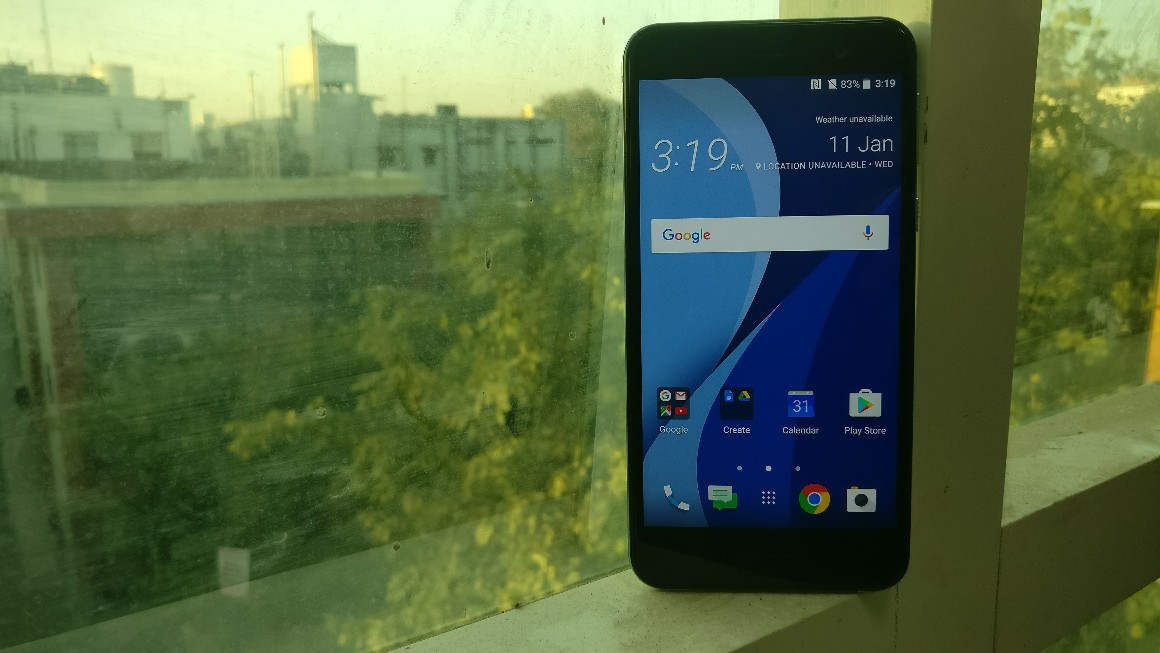
Unfortunately, the review unit we had was yet to get the HTC Sense Companion which is HTC’s own AI-based personal assistant so we couldn’t test one of the most talked about features of the HTC U series. Coming to the audio performance, the audio output from the bottom firing speakers is average at best. The speaker does get loud but the is not the best when it comes to sound quality. On the other hand, the U Play does come with a premium USonic earphones inside the box which connects through the USB Type-C port on the device. So, no 3.5 mm Headphone jack here. Nevertheless, the audio quality from the given earphones is amazing. HTC BoomSound is now replaced by HTC U Sonic which scans your ears through the given earphones and adjust the audio settings accordingly. As a result, you get one of the best audio experiences on a smartphone. The earphones given in the box are decent in quality and also comes with an inline mic with receive and end call button which works just as it should.
Camera
HTC have had a tough time in the camera department especially after a not so overwhelming response post-HTC One M9. The experimental UltraPixel technology which the Taiwanese giant first introduced with the HTC One M7 didn’t grow well over time. For the U Play, I had mixed feelings regarding the camera performance of the device. Quickly listing the specs, the U Play features a 16-megapixel rear camera along with PDAF, Optical Image Stabilization, f/2.0 aperture, Dual-tone LED flash, Full HD video recording etc. While on the front, we get a 16-megapixel selfie camera with f/2.0 aperture, Full HD video recording etc. The camera interface on the device is quite similar to what we have seen in the past on HTC devices. We get different modes such as Pro Mode, Panorama, Zoe Camera, Selfie Panorama, Hyperlapse, Auto HDR etc.
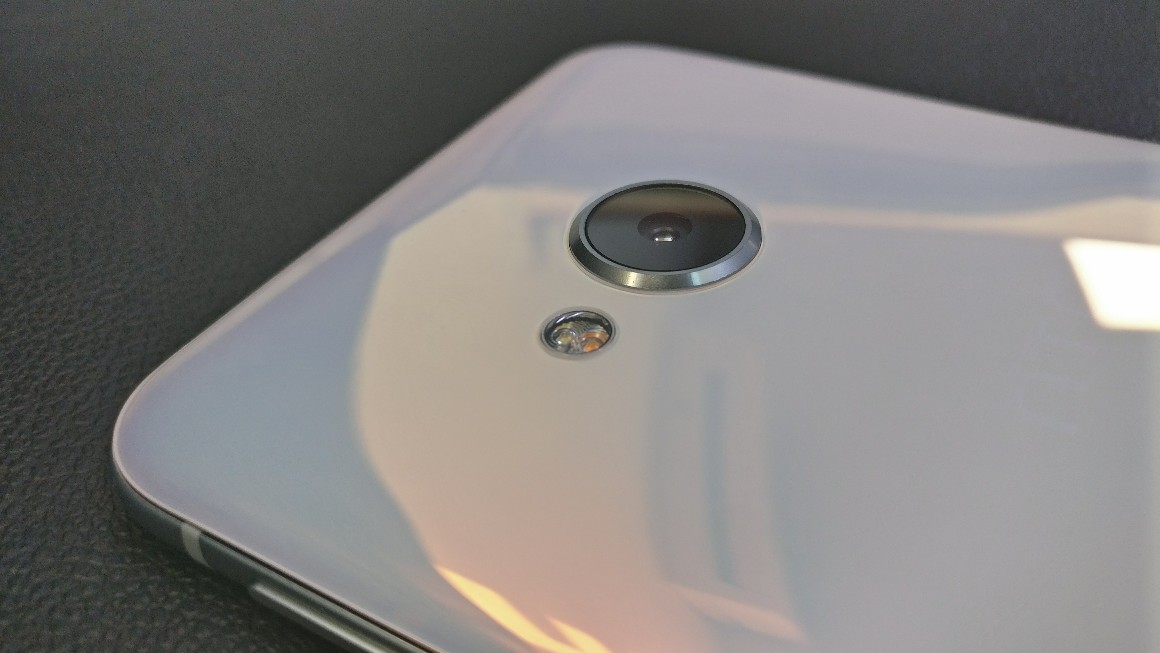
For the performance, the rear camera on the U Play does a really good job outdoors or in good lighting conditions. We get some decently detailed shots with natural colours in most of the cases. The built-in HDR mode also does a decent job of highlighting the darks and balancing the overall image. I was also impressed with the amount of dynamic range this camera can bring out in various shots we took outdoors. However, it does tend to struggle in low-light. Interestingly, the camera lets in a decent amount of light in low-light conditions, however, I got a strange pink/purple tint in most of the low-light shots. Further, we also get a lot of noise in the pictures but that is acceptable given most of the cameras even in premium segment struggle in low-light conditions.
Talking about the front-facing 16-megapixel camera, I was impressed almost every time I clicked a picture with the front-facing camera on the HTC U Play. The pictures come out to be decently exposed with a nice amount of detail and colours were also just fine. However, I say almost because the selfie camera also struggles in low-light. We don’t get the pink/purple tint here but the overall quality of selfies shot in low-light could be better.
Meanwhile, the video recording experience on this device was impressive. The video recorded was quite stable and the audio quality was also on par. I would have loved 4K but 1080p (@30fps) will do the job for most of the targeted audience.
Battery and Connectivity
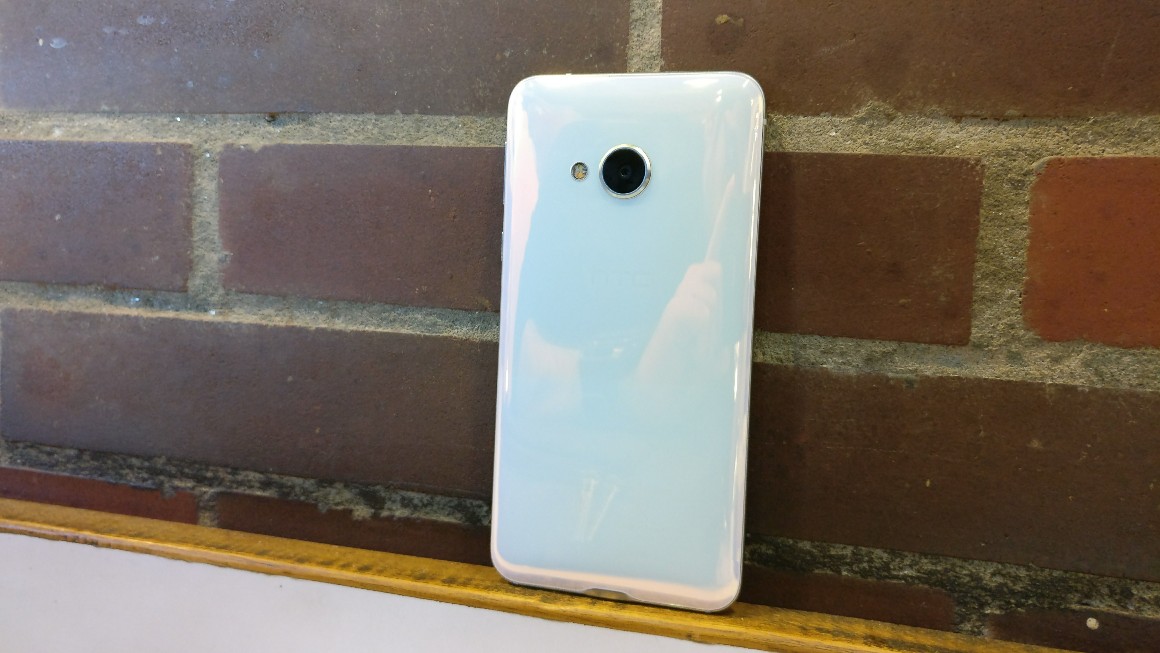
The battery life on the HTC U Play is perhaps where it could really struggle. We get a 2500 mAh non-removable Li-Ion battery inside which can last you day if you are not a heavy user. The given built-in battery saver does help extract a bit more juice but I struggled to get through an entire day on this device. The average Screen On Time (SOT) during my testing was 4 hours which is not bad given it comes with a 2500 mAh battery. Starting my day at 7:30 AM, the U Play went below 20% by 5-6 PM. Further, your results may differ based on the usage patterns. More importantly, how well the battery holds up after six months of charging cycles is to be seen.
In terms of connectivity, 4G, GPS, Bluetooth 4.2, Wi-Fi 802.11 a/b/g/n/ac, NFC, DLNA, Miracast, HTC Connect and USB 2.0 Type-C. As mentioned before, we don’t get the traditional 3.5 mm headphone jack. Now USB Type-C is surely the future but as of now, opting out the 3.5 mm headphone jack is surely an additional con for this device. Also, the device I had didn’t have VoLTE which HTC might bring in with a software update soon.


